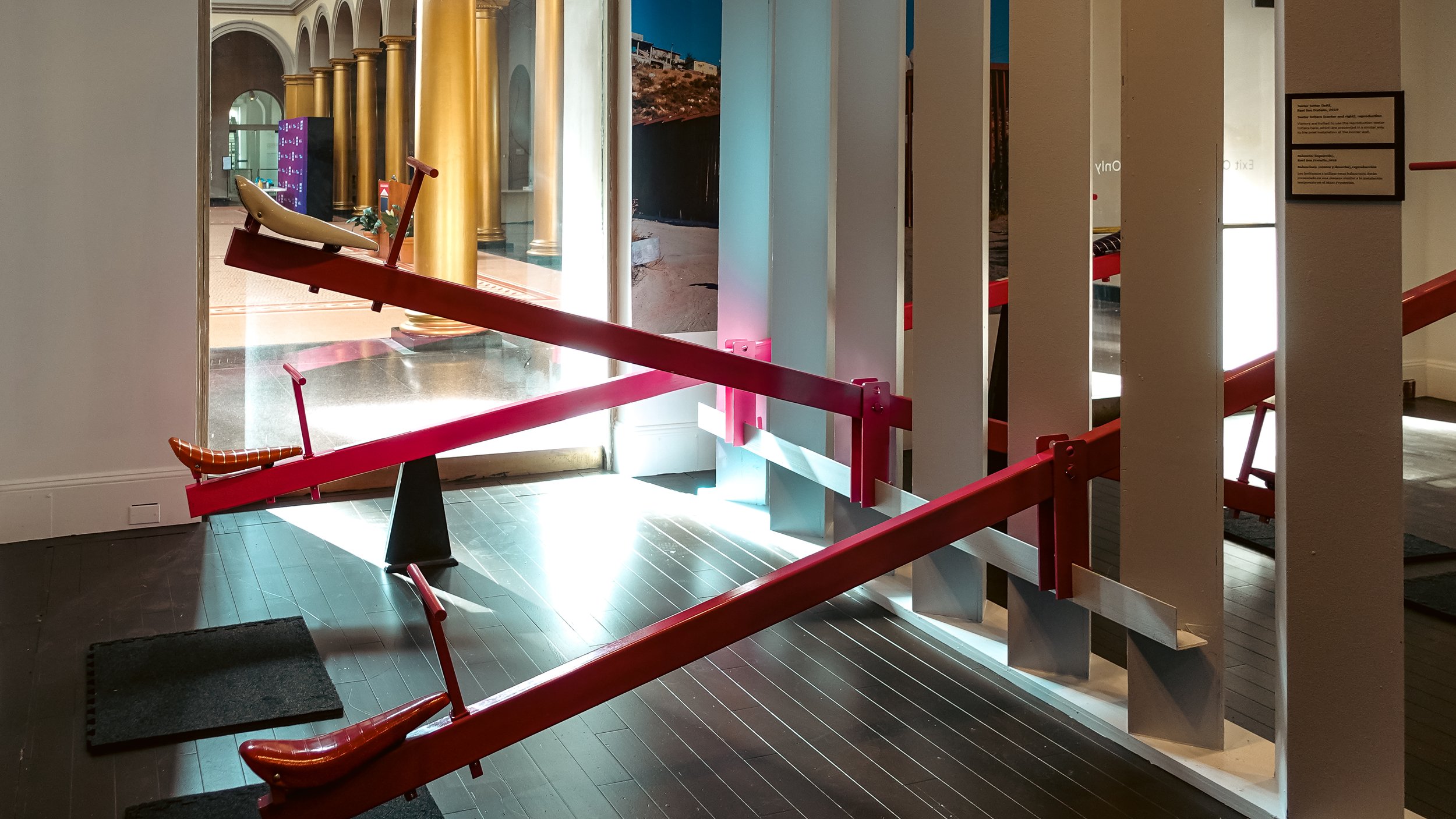











DIY -- Do It Yourself. As applied to music and the arts, DIY usually signifies the show, project, or venue is produced by the artists themselves. Even though not always not-for-profit on paper, usually DIY spaces are run without being part of, or subject to direct oversight of a typical corporation, government agency, or overarching bureaucratic framework. Nor would shareholder be profit the main motive.
The idea of having multiple DIY arts spaces in downtown DC is somewhat of an anomaly today. Many of those arts spaces are located outside the downtown core in group houses, places of worship, or underutilized retail spaces.
A new exhibition (D.I.Y. in the District) located on the first floor of the MLK Library highlights alternative DIY arts spaces in DC from the 1970s to the present. From Rhizome (located in a residential setting way uptown), to d.c. space (formerly located in the heart of downtown DC), the exhibition uses venue ephemera, archival photos, and audiovisuals to show how these venues helped shape the usually unrecognized arts culture embodied in DC's local population. That is to say, the arts outside of national or international museums and organizations.
Perhaps a partial "victim of their own success," dc. space closed in 1991 as downtown DC was about to see a 30 year boom of redevelopment and new construction that continues today. That redevelopment boom transformed downtown culture to favor retail and entertainment, but much of the DIY arts scene was left out. There are art galleries, theatres, and entertainment venues downtown, but the cultural scene is dominated by larger entities such as the Smithsonian (SAAM and NPG) and the 20,000 Capital One Arena which is primarily a sports venue. But, smaller artist-run galleries such as Touchstone (1976) do still exist.
MLK Library has grown over the past decade to be a place for so many diverse resources and I'm glad these great hall exhibitions have been a part of that growth.
D.I.Y. in the District is open through December 7, 2025. 901 G St NW, Washington, DC 20001.
Support us on Patreon to receive all posts, and early!









